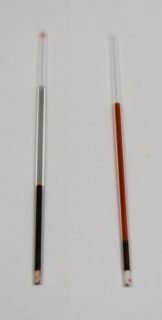Last month we talked about how to determine if your effusion was septic. This time, let’s look into further evaluation of effusion samples.

If the effusion is haemorrhagic, here are some things to look out for.
Real or iatrogenic origin?
- Blood rapidly defibrinates in cavities – so if it clots, it is iatrogenic.
- If it swirls during collection, it is more likely to be iatrogenic.
Is it acute or chronic?
- Compare PCV/total protein (TP) to peripheral. If sample PCV/TP = peripheral blood PCV/TP then a recent bleed is most likely the cause.
- Always run a PCV/TP on haemorrhagic effusions – don’t always assume it is from a large haemorrhage. Effusions with low PCVs (for example, 5) can look like frank blood.
- If sample PCV is low, but TP the same as peripheral blood, the bleed is likely chronic.
- If erythrophagocytosis is present, it is chronic. Look for macrophages, containing dark brown to green pigments, in your smear.
- Assess for the presence of clumped platelets. These can mean intravascular sampling or a very acute bleed.
Gerardo Poli is the author of The MiniVet Guide to Companion Animal Medicine – now available in the UK.

Leave a Reply